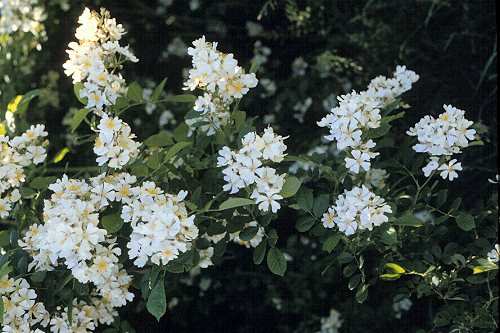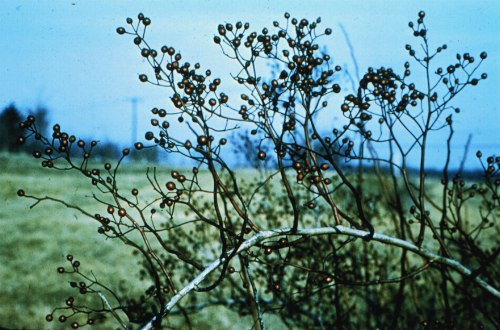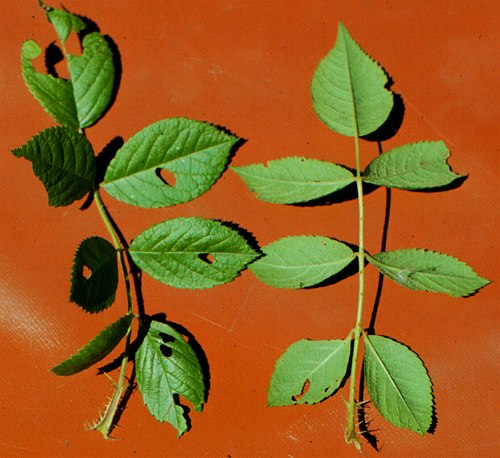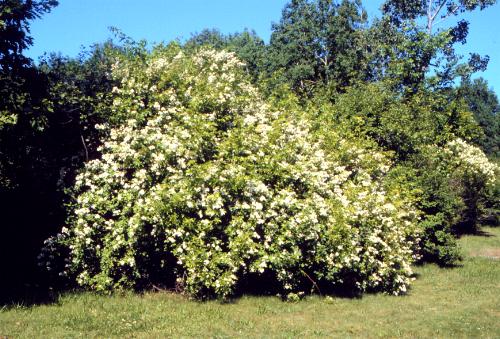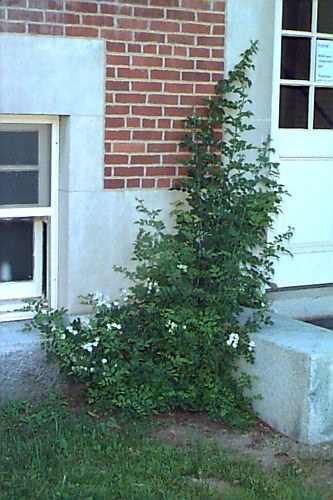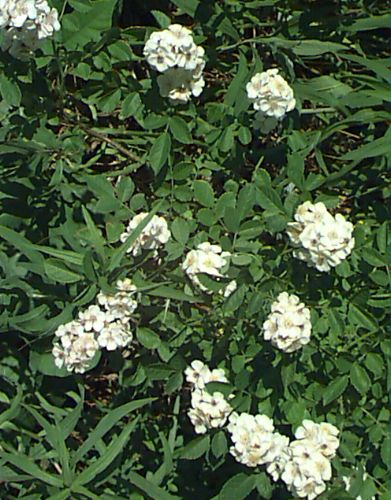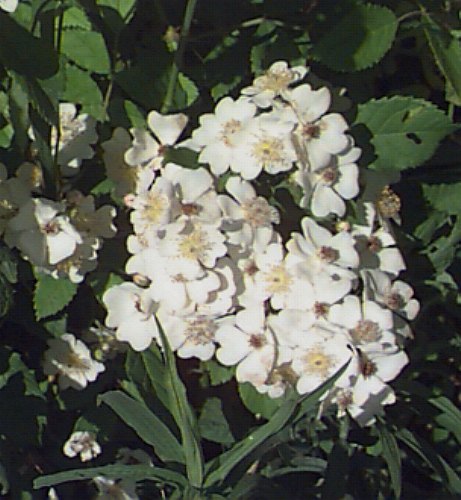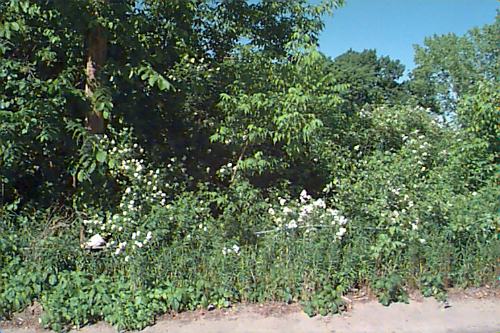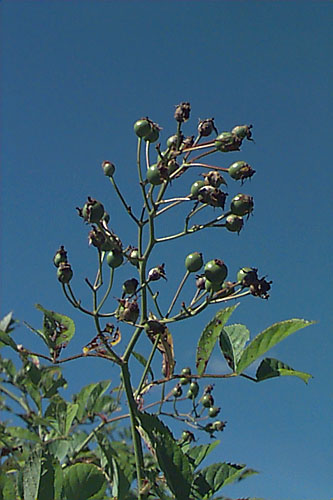Rosa multiflora
Japanese Rose, Multiflora Rose
Rosaceae
ExpandHabitat
- native to Japan and Korea
- hardy to zone 5
- widely naturalized throughout the United States
- Special Note: This species has demonstrated an invasive tendency in Connecticut, meaning it may escape from cultivation and naturalize in minimally managed areas. For more information, .
Habit and Form
- a deciduous shrub
- fountain-like form
- 3' to 8' tall
- 10' to 15' wid
- medium texture
- fast growth rate
Summer Foliage
- alternate leaf arrangement
- odd, pinnately compound leaves
- usually 9 leaflets
- obovate leaf shape
- settate leaf margins
- stipules present
- bright green leaf color
Autumn Foliage
- yellow
- not ornamentally important
Flowers
- white, single flowers
- 1" across
- fragrant
- blooms in June
- borne in corymbs
Fruit
- red hip
- 0.25" across
- egg-shaped
- matures in August
Bark
- pricles along canes
- branches are predomitely basal
Culture
- full sun
- easy to transplant
- prefers well-drained soil
- pH adaptable
- salt tolerant
Landscape Use
- hedge
- for flowering effect
- specimen
- for seaside planting
Liabilities
- foliar diseases are common
- invasive: the plant seeds readily into wild/waste places
- nonserious pest problems
ID Features
- recurved prickles
- alternate leaf arrangement
- red hip
Propagation
- by seed
- by cuttings
Cultivars/Varieties
- none
